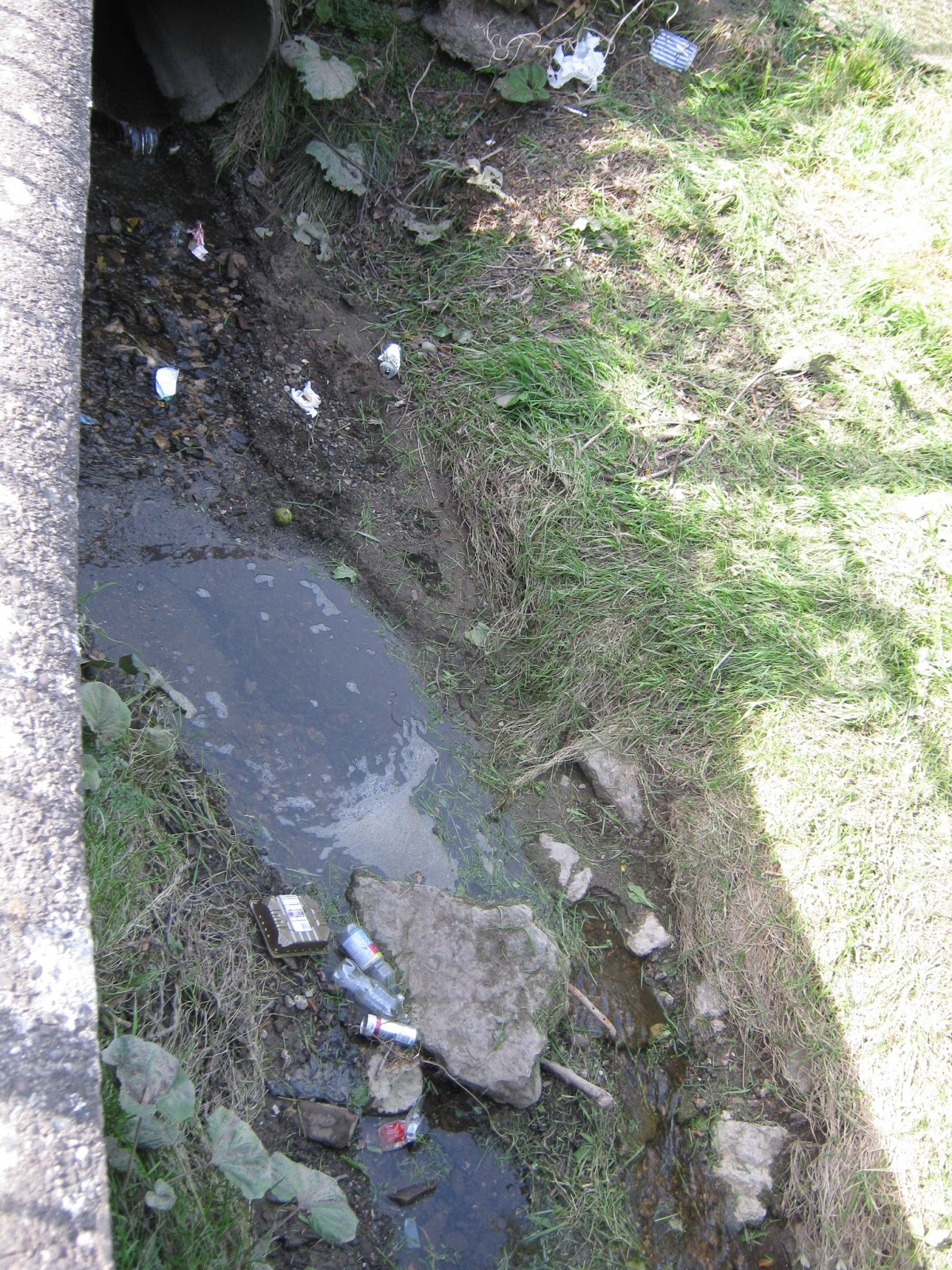This is a picture of a tributary of Endon Brook which passes under Station Road, Endon. The photograph was taken last September. I was thinking about this photo earlier today when I was reading that last year researchers at Plymouth University and the UK Marine Biological Association discovered that about a third of a sample of 503 fish caught in the English Channel had tiny fragments of plastic in their digestive systems. And, it is not only fish that ingest plastic. Microscopic creatures that live in our oceans as part of the plankton, have also been found to have these microplastics within their bodies. In fact, the plastic probably gets into the fish when they consume marine plankton as part of their diet.
So what has all this got to do with litter in Endon Brook? Well eventually those plastic bottles and other packaging will end up in the sea via the rivers Churnet, Dove, Trent and then out to sea at the Humber estuary. On their journey down the rivers they will become scratched, battered and bashed and possibly broken into pieces. This physical fragmentation continues whilst at the same time ultraviolet rays from the sun also degrade the plastic. Over a period of some years, in both freshwater and sea, each piece of rubbish is eventually broken down into tiny particles. In the marine environment the plastic meets up with a whole range of chemical pollutants, such as DDTs from agricultural pesticides and PCBs from manufacture of uPVC plastics, that have accumulated in our seas and oceans since the industrial revolution. These chemicals are hydrophobic - that is, they don't like water, however they do like to bind with oily substances such as the microplastics which act like a magnet to the toxins. The chemical properties of the plastic fragments cause the toxins to become concentrated around the microplastics at level that is up to a million times higher that is found in the surrounding ocean. This preference for these toxins to bond with oils means that they bioaccumulate within the fatty tissues of marine animals that ingest them.
The NHS recommend "a healthy diet should include at least two portions of fish a week, including one of oily fish", but they also say "There are recommendations for the maximum number of portions of oily fish we should be eating each week. This is because oily fish can contain low levels of pollutants that can build up in the body" These are their recommendations: http://www.nhs.uk/Livewell/Goodfood/Pages/fish-shellfish.aspx
What am I going to do about this? Well, I will gather up plastic litter when I see it (when it is practical to do so). And, I might try to dissuade the kids who drop the litter from doing so, and point out to them that there is a bin only a short distance away. I'll let you know how I get on.


No comments:
Post a Comment